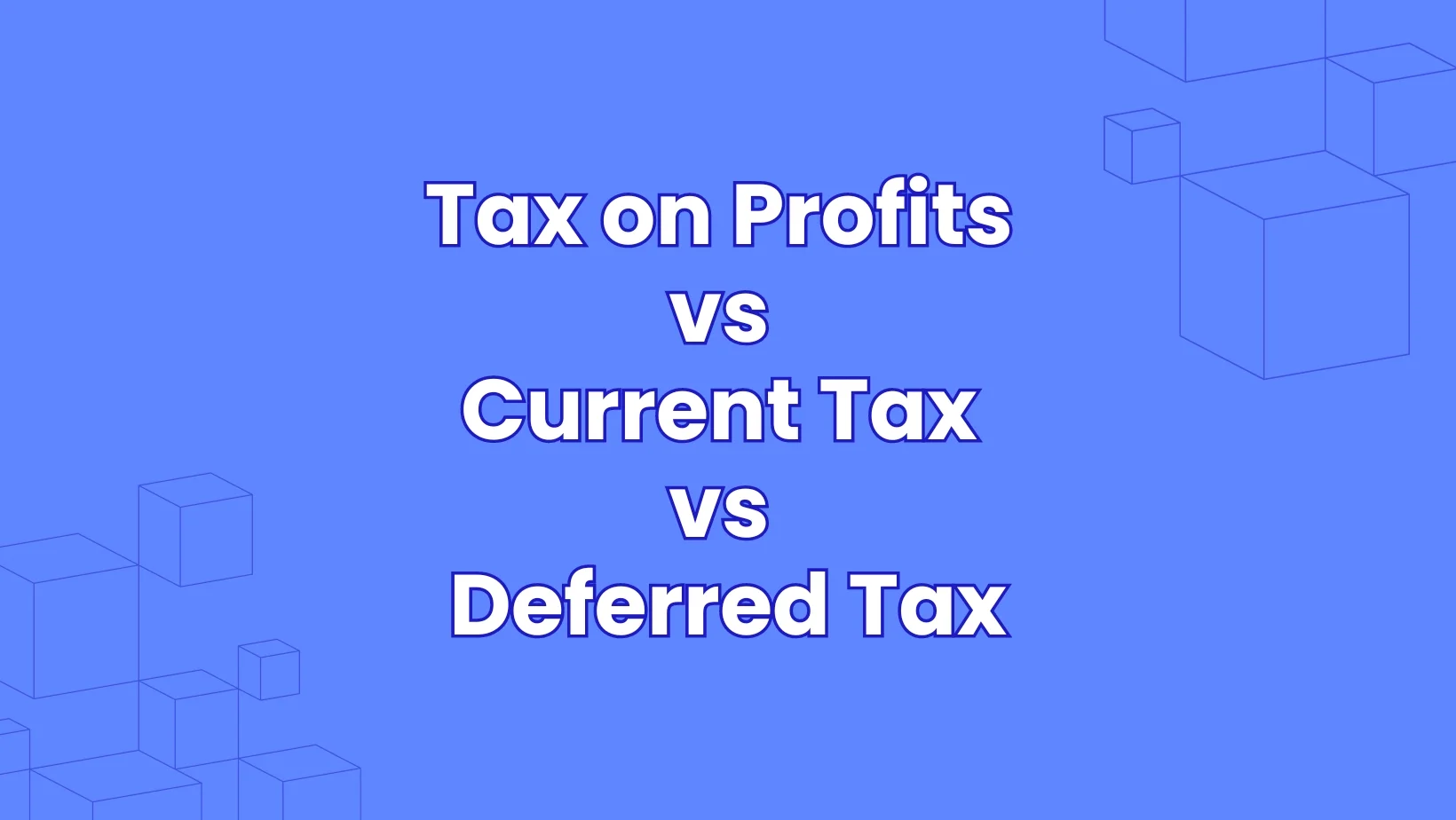
Taxation is a fundamental aspect of any economy, shaping the financial landscape of individuals and businesses. Within the realm of corporate finance, three critical terms—Tax on Profit, Current Tax, and Deferred Tax—stand as pillars in the world of financial obligations and accounting intricacies.
These three concepts, although interconnected in the realm of taxation, each have their distinct roles, timing, and financial implications for a company. Understanding the differences between Tax on Profit, Current Tax, and Deferred Tax is essential for financial professionals, business owners, and anyone seeking clarity in the world of corporate taxation.
Tax on Profits vs Current Tax vs Deferred Tax
Definition
Profit taxation is a compulsory financial levy imposed by the government on a business’s taxable earnings. This tax is determined using the company’s financial records and signifies the sum owed by the company in taxes for a particular timeframe.
Current tax denotes the segment of income tax that a corporation is required to remit to the government during the ongoing reporting period. It signifies the immediate tax obligation for the present fiscal year.
Deferred tax pertains to the tax implications arising from temporary disparities between accounting and tax regulations. These disparities may lead to potential tax outcomes, which could manifest as deferred tax assets or liabilities.
Financial statement impact
Tax on profits is recorded as an expense on the income statement, reducing the company’s net income. The amount of tax payable is also disclosed on the balance sheet as a liability, representing taxes owed but not yet paid.
Current tax expenses are reported on the income statement as a reduction of the company’s pre-tax profit, contributing to the calculation of net income. The current tax payable is also recorded as a liability on the balance sheet.
Deferred tax assets and liabilities are reported on the balance sheet and signify future tax implications. These changes also impact the income tax expense reported on the income statement.
How to optimize
Tax on Profits
To help businesses navigate this complex landscape, we’ve distilled four key strategies for optimizing Tax on Profits.
- Tax Planning: Engage in strategic tax planning to legally minimize tax liability.
- Transfer Pricing: Adjust prices for intra-company transactions to minimize tax liabilities in different jurisdictions.
- Tax Credits and Incentives: Explore available tax credits and incentives related to research and development, renewable energy, or other qualifying activities.
- International Tax Planning: Consider strategies like transfer pricing, foreign tax credits, and utilizing tax treaties to reduce overall tax liabilities across jurisdictions.
Current Tax
Discover four potent strategies for enhancing financial efficiency through Current Tax optimization, benefiting businesses and financial professionals:
- Accurate Reporting: Ensure accurate and timely reporting of financial data to calculate and pay the correct amount of tax.
- Quarterly Estimated Payments: Make quarterly estimated tax payments to spread the tax liability evenly throughout the year, reducing the burden at year-end.
- Loss Carryforwards: Utilize any available tax loss carryforwards to offset current taxable income.
- Tax Credits and Incentives Utilization: Maximize the utilization of available tax credits and incentives specific to your industry or region.
Deferred Tax
Learn how to improve your financial situation using these four strategies for Deferred Tax optimization:
- Deferred Tax Planning: Engage in strategic tax planning to optimize deferred tax positions.
- Review Valuation Allowances: Assess the need for a valuation allowance against deferred tax assets to ensure they are recoverable.
- Consider Tax Rate Changes: Be aware of potential changes in tax rates and how they might impact the valuation of deferred tax assets and liabilities.
- Strategic Timing of Asset Sales: Consider the timing of asset sales or other transactions that create temporary differences.
Final Words
Tax on Profit, Current Tax, and Deferred Tax each play distinct roles in a company’s finances. Tax on Profit is immediate, Current Tax is ongoing, and Deferred Tax deals with future implications, all influencing a company’s financial health in their unique ways. Understanding these differences is key to making sound financial decisions.






